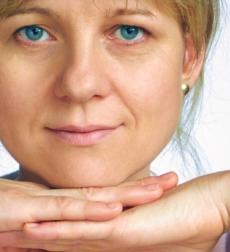An arm lift surgeon virtually cuts away extra skin and fat tissue through an incision, the location and size of which is determined preoperatively depending on the position of this redundant tissue. The remaining skin is then pulled tight and carefully sutured to its new position.
Who is an ideal candidate for brachioplasty?
Almost everyone who is bothered by the massive folds of excess skin that hang downwards when the arms are lifted, may undergo arm lift surgery. There are only a few restrictions which – apart from the common ones such as being over the age 18 and in good health – are in connection with body weight.
It has to be noted that although brachioplasty can successfully eliminate a large amount of redundant skin, it cannot deal with obesity. If your primary goal is to lose weight, you may first consider getting rid of it with the help of dieting, gastric restriction surgery or liposuction. We strongly advise our patients to maintain a stable weight for at least three months prior to the operation because further changes in weight might cause the stretching of the lifted skin or offset the effects of the procedure.
Another aspect you have to consider is the scars that remain after healing. Although in case of minimal sagging the incision can be well hidden in the armpit, a full arm lift does leave a permanent scar along the inner side of the arm. The surgeons at BeautyHungary have all the expertise in the field of body lifting procedures that helps them locate the incisions in such a way as to limit the appearance of scarring but scars are still inevitable results of the operation. For most of our patients having slimmer and firmer upper arms far outweigh the remaining scars.
What causes the skin on the upper arms to sag?
Those who have to deal with a large amount of redundant skin hanging loose from the arms know that the unwanted skin will not respond to dieting and exercise or any available treatment. The condition, which is also referred to as 'bat wing deformity', is most often caused by the loss of skin elasticity on the upper arms.
This is generally a result of several rapid changes in body weight or one massive weight loss but ageing and sun damage may also contribute to the development of skin laxity. Loose skin flaps can appear on the abdomen, buttocks, back and thighs but they are the most unpleasant on the arms as one can never hide that region entirely.
Types of arm lift surgery
We place especially great emphasis on the careful developing of the ideal surgical plan for each of our patients. This usually takes place during an initial consultation where your surgeon comes to examine the location and amount of excess skin on your arms and the neighboring areas. These two factors help him or her determine the exact place and pattern of the incisions, ensuring the least visible trace left behind by the surgery and the most pleasing outcome. Based on the location of incisions, there are three different approaches to arm lifting.
- Standard brachioplasty – traditional arm lift
Surgeons prefer to tighten the arms with the standard arm lift technique when the amount of redundant skin extends from the underarm down the length of the upper arm to the elbow, drooping downwards if the arms are open. The incision is either a single line running along the underside of the upper arm or if more tissue is to be trimmed away, an L- or T-shaped cut may be used. It means one incision across the armpit and another one going on the inner side of the arm, from the axilla to the elbow.
Some patients prefer this second incision to be located on the midsection of the arm so that it cannot be seen if the arms are at the sides, while others ask for an incision that – when the arms are opened apart – runs along the lower contour of the arm.
- Extended brachioplasty
This type of arm lifting is recommended for those who have managed to lose a significantly large amount of weight and now have to face massive folds of extra skin throughout the upper portion of the body. Extended arm lift surgery extends the incision from the armpits to the elbows and along both sides of the chest, to the level of the lower curve of the breasts. The technique is often performed as a part of the upper body lift.
- Axillary brachioplasty – mini arm lift
Mini arm lift is the procedure of choice for patients with only a moderate amount of extra skin located on the upper portion of the upper arm, not farther than 2 inches (5 centimetres) away from the axilla. In this case the surgeon can hide the incision in the armpit and pull the skin tight through it.
Recovery after arm lift surgery
Your surgeon's comprehensive list of instructions will help you through your recuperation period. After about two weeks of wearing a compression garment the results will be apparent as bruising and swelling will mostly have gone by then. It is also at this time that you can resume work provided that it does not require strenuous activity. The complete healing of the scars may take 6 to 9 months but once they fade, just take the short sleeves and spaghetti straps out of the wardrobe and show the world your new firm and toned upper arms.
If you feel that arm lift surgery would be beneficial to you, please do not hesitate to take the first step and contact us to learn more about candidacy and your options.





